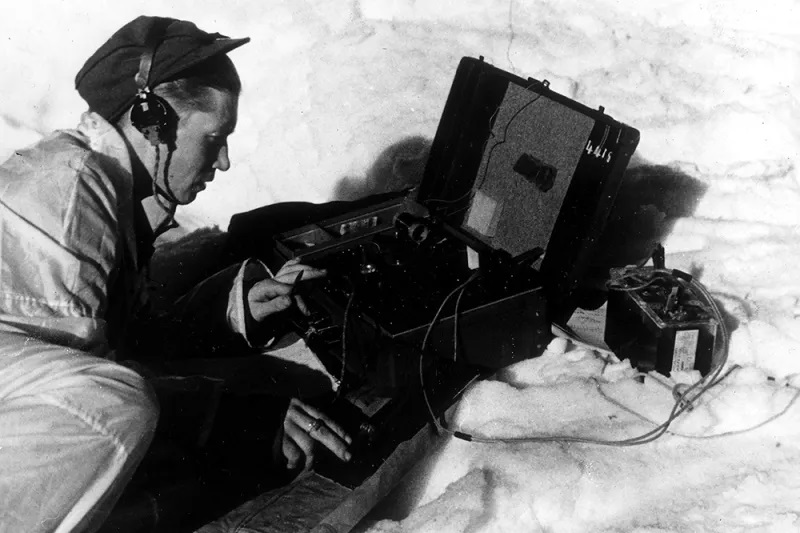Since the racial riots last summer, Flannery O’Connor has been scrutinized by literary critics and activists for reasons wholly unrelated to her literary artistry and her formidable oeuvre, whose size, though not large, is remarkable for a writer who died at the age of 39 after having been diagnosed in her mid-20s with lupus. The abruptly renewed interest in Miss O’Connor could be said almost to amount to an O’Connor revival were it not focused on a single question: ‘Was Flannery O’Connor a racist, or was she not?’
Attempts to answer it have involved an evaluation of her character based on her novels, stories and voluminous correspondence, and led in one instance to the critical conclusion that she was ‘not a saint’. It remains a fact, unknown perhaps to most people outside the Catholic Church, that Catholic doctrine teaches that every soul that is neither in Hell nor in Purgatory is in Heaven, and that anyone who has attained Heaven and the Beatific Vision is necessarily a saint. As not even Miss O’Connor’s most fervent critics have gone so far as to insist that she is in a state of eternal suffering it is logical to conclude that Flannery O’Connor is, indeed, St Flannery, or on her way to becoming that. The business at any rate is of little or no interest to most modern critics, who can never get beyond their objection that she took no part in the civil rights movement of the 1950s and ’60s. ‘I say,’ she wrote, ‘a plague on both their houses.’
Black characters being virtually absent from her work, evidence of O’Connor’s supposed racism is drawn mostly from her letters, The Habit of Being, in which she displays an attitude toward her black neighbors and the black employees at Andalusia — her mother’s dairy farm some miles outside of Milledgeville, Georgia, where she lived for most of her short life following her medical diagnosis — that is wholly conventional for that place and time: benign, generous, slightly condescending and gently amused. O’Connor’s refusal to meet with James Baldwin in Georgia for the reason she gives in a letter to Maryat Lee (a young Southern liberal, civil rights activist and one of Flannery’s closest friends) cannot have been overlooked by her 21st-century critics: ‘It would cause the greatest trouble and disturbance and disunion. In New York it would be nice to meet him; here it would not. I observe the traditions of the society I feed on — it’s only fair. Might as well expect a mule to fly as me to see James Baldwin in Georgia. I have read one of his stories and it was a good one.’ In a conversation with an interviewer she gave her considered view of the race question in the South.
‘[The Southerner’s] social situation demands more of him than that [sic] elsewhere in the country. It requires considerable grace for two races to live together, particularly when the population is divided fifty-fifty between them and when they have a particular history. It can’t be done without mutual charity… [The] old manners are obsolete, but the new manners will have to be based on what was best in the old ones — in their real basis of charity and necessity… For the rest of the country, the race problem is solved when the Negro has his rights, but for the Southerner, whether he’s white or colored, that’s only the beginning.’
That is Flannery O’Connor the social commentator on the subject of ‘the race problem’. O’Connor the literary artist treats the subject with the moral and theological depth that only a great artist can achieve. ‘The Artificial Nigger’ (the title refers to the sort of plaster lawn statue that, 60 or 70 years ago, was not an unusual lawn ornament in Atlanta or up north) is her most comprehensive and final statement on the subject of race and America. In the story, Mr Head takes his grandson Nelson on a day trip to Atlanta to expose him to the social and moral evils of the city so that, having witnessed them at first-hand, he will never be tempted to return there. While making their way on foot back to the train station, the two of them pass by the statue sitting propped on a garden wall: ‘He was meant to look happy because his mouth was stretched up at the corners but the chipped eye and the angle he was cocked at gave him a look of wild misery instead.’ The sight of him shakes Mr Head profoundly. He and Nelson climb down from the train at a whistle-stop in the middle of the night:
‘He stood very still and felt the action of mercy touch him again but this time he knew there were no words in the world that could name it. He understood that it grew out of agony, which is not denied to any man and which is given in strange ways to children. He understood it was all a man could carry into death to give his Maker… He stood appalled, judging himself with the thoroughness of God, while the action of mercy covered his pride like a flame and consumed it.’
As he stands beside the track in the darkness, the gigantic white clouds are illuminated like lanterns by the moon and the trees around stand like the wall of a garden while the train glides past them and disappears ‘like a frightened serpent into the woods’. The direct and obvious imagery reflects the author’s emotional intensity as she brings the story to its conclusion. Referring to the words ‘artificial nigger’, O’Connor wrote to Maryat Lee, ‘It’s not only a wonderful phrase but it’s a terrible symbol of what the South has done to itself.’
The truth is that had Miss O’Connor been a civil rights activist she would not have been the consummate literary artist that she was, the two roles being radically and fundamentally incompatible. The dominant elements in the activist personality are idealism and sentimentalism, or ‘tenderness’ — a quality O’Connor thought led straight to the gas chambers. Flannery O’Connor was neither an idealist nor a sentimentalist but an orthodox Catholic who never allowed even the modern Church to sentimentalize the basic inalterable and irreducible conditions of human life for her. As she wrote to one of her most frequent correspondents and closest friends, ‘We are all The Poor.’
Crucially, Flannery O’Connor saw life from the perspective of someone who, she said, has ‘never been anywhere but sick.’ Blessed with genius, she was also ‘cursed’ with bad genetics, having inherited lupus from her father, who died of the disease in his 40s. In fact, from Christian devotion she accepted her illness as another gift from the Lord and bore it with courage as a form of what Teilhard de Chardin called ‘passive diminishment’. Congenital ill health taught her patience, fortitude, and — above all — the humility that rejects any notion or feeling of racial superiority. O’Connor’s life epitomized longevity as Aquinas understood the word: short in years yet long in fullness and completion, allowing her to compress into her 39 years at least as much as most centenarians succeed in doing.
Seven decades before Flannery O’Connor was accused of racism by progressives, she was being criticized by readers and critics for writing stories and novels that, like the characters that animate them, were ‘grotesque’, nasty and unpleasant. She herself said that fiction writers are concerned with either ‘folks’ or ‘freaks’, and conceded that she belonged in the second category. Her choice — so far as any writer has a choice in what he is able to make live on paper — reflected her view of southern Protestantism as a ‘do-it-yourself religion’ with results that she found grimly and pathetically comical.
The stories are superior to the novels (which are not much longer than novellas) chiefly because the novel is incompatible with freaks and freakishness, both being difficult to maintain at length. How long a book could be supported by Tarwater, the juvenile prophet in The Violent Bear It Away who drowns a retarded boy in his effort to baptize him; or Hazel Motes, the founder of the Church of Christ Without Christ in Wise Blood, who ends by blinding himself with lye? Flannery O’Connor’s art required and depended equally upon the utmost concision, which explains why the two novels took her so much longer, relatively speaking, to complete than the stories. (She was at The Violent Bear It Away, the second novel and a book of 244 pages, for seven years.)
O’Connor is the only writer of major stature I can think of who graduated from a program in creative writing. But she learned to write, I think, mainly by reading the right novels and taking from them what she needed artistically, often in an unconscious way. She claimed that she read Conrad’s novels ‘hoping they’ll affect my writing without my being bothered knowing how’.
In her critical capacity she was particularly good at assessing the virtues and deficiencies of her own stories and novels. Because these are so intimately and inextricably associated with her Catholic faith, in addressing the work she was necessarily addressing the faith as well. Her collected letters are at once an informal treatise on the art of fiction and an introduction to Catholic theology and the Catholic mind. It is also in many ways her funniest book, containing many humorous anecdotes capable of expansion and development to the length of a short story. The letters’ charm, liveliness, immediacy, humor and wit reflect the extent to which written correspondence was almost the sole form of social engagement available to a naturally gregarious and extroverted young woman invalided by illness and geography and living in socially and intellectually isolated circumstances.
As for the saint business, I believe as a Catholic that speculation about who is, or is not, a saint — apart from people canonized by the Church — is inappropriate. I believe further that in the case of Flannery O’Connor there is, self-evidently, neither need nor reason to worry about it.
This article was originally published in The Spectator’s June 2021 World edition.

























